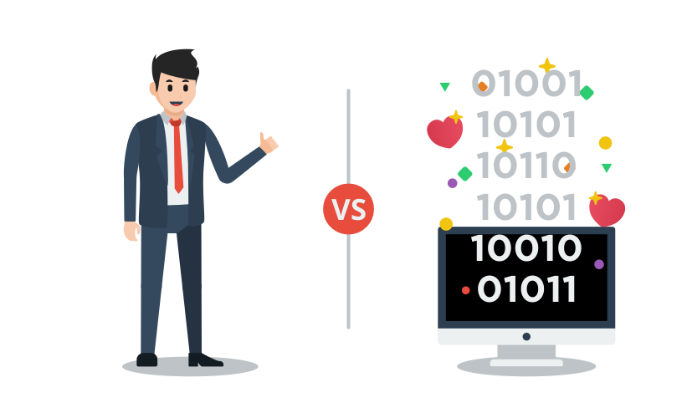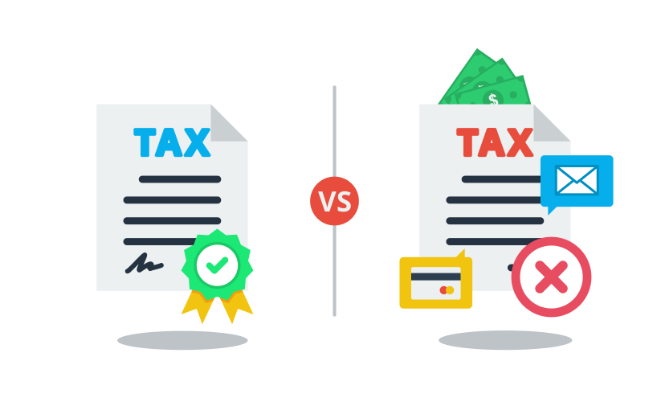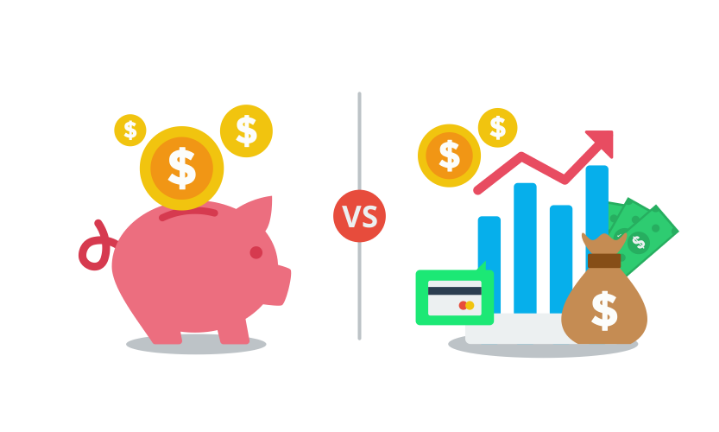For Business Owners Without HST Registration


For Business Owners With HST Registration
If your business is registered for HST—such as if you’re a taxi/Uber driver, in construction, legal services, or a subcontracted technician—you will need to file an HST return in addition to your personal tax return. To file your HST return, please provide one of the following:
- Business authorization: Log in to your CRA My Business Account and authorize us by following the instructions.
- Your last year’s HST filing report.
- Your HST number, access code, and filing periods.
If you have difficulty obtaining any information listed above, you can call the CRA at 1-800-959-5525 for assistance. For more details on HST, visit the HST section on our Knowledge page.

For Corporations
Your corporation’s taxes are filed separately from your personal tax return. This means you’ll need to file both your personal tax return (T1) and your corporation tax return (T2).
How we’ll work together on your corporation’s tax filing:
Initial Consultation
We offer a free consultation to understand your business, address your concerns, and discuss your expectations.
Business Authorization
You’ll need to log in to your CRA My Business Account and authorize us by following the instructions.
Reviewing Business Information
Once authorized, we can access your CRA My Business Account to review key information like previous corporation tax filings, payroll, HST filing requirements, and any capital or non-capital losses carried forward from previous years.
Preparing Your Corporation Tax
Tax Optimization
- Paying yourself a salary vs. dividends
- HST quick method vs. regular method
- Active business income vs. investment income
- Strategies for withdrawing funds from your company For more details on corporation tax filing, visit the Corporation section on our Knowledge page.
Why Choose Us
We use innovative technology and practice methods to deliver professional tax services at a reasonable price. Today, we serve hundreds of small businesses and treat our clients the way we would want to be treated—like humans, not puzzle pieces in a bureaucratic system.

Human Over Number
Despite working with numbers every day for over a decade, we always see our clients as individuals with unique emotions and needs. We make it a priority to listen and understand our clients, treating them as the unique people they are.
Simplicity Over Complexity
Canada’s tax codes may be complex, but we simplify the process to ensure the job gets done efficiently. We always use clear, jargon-free language and guide you through straightforward steps to resolve your tax issues.


Simplicity Over Complexity

Affordable Over Expensive
Accounting used to be costly and time-consuming, but with advanced tax software and improved CRA online services, it’s now simpler and more affordable. At Solid Tax, we believe everyone should access modern tools to get the job done quickly and at a low cost
Frequently Asked Question
Small Business Taxes
-
What do I need to incorporate my business?
- Name your corporation:
If you want to create a specific name for your corporation, you’ll need a NUANS report to check the availability of the name. The report is valid for 90 days. For more information, visit NUANS.
If the name isn't important, you will be assigned a numbered company, which guarantees approval and doesn't require a NUANS report. - Incorporate your business online:
Sign into the system using either a Government Key or your banking credentials via Sign-In Partner. To incorporate a federal corporation, follow this link. - Receive your Corporation Certificate and Business Number:
After successfully incorporating, you’ll receive a Corporation Certificate via email from Corporations Canada. Within 1-2 days, you will also be assigned a business number (BN) from the CRA for your corporation. - Register for HST and Payroll accounts:
HST and payroll accounts are not automatically assigned. If you need to charge HST or pay employees, you must contact the CRA or register through your CRA My Business Account to open these accounts. - Operate under your corporation:
Going forward, all invoices and bills should be issued in your corporation’s name when conducting business.
- Name your corporation:
-
This is my first time filing taxes with Solid Tax for my corporation. What is the procedure?
- Book an initial appointment.
We need to understand your business, expectations, and concerns. Please book an initial appointment, which can be either a phone call or an office meeting, so we can discuss these details. - Authorize Solid Tax to access your CRA My Business Account.
To prepare your corporate taxes, we need to know your CRA filing requirements, and review the previous year’s income statement and balance sheet. Please log in to your CRA My Business Account and provide us with Level 2 authorization by entering our Group ID: GTK3GX. If you don't have access to your CRA My Business Account, you'll need to register with the CRA first. If you've forgotten your username or password, please contact the CRA for assistance. - Provide your business financials.
You can share your business financials in whichever way you're comfortable. This can be through a summary of spreadsheets, filling out our checklist, or giving us access to your QuickBooks account. - Review and submit your tax filings.
We will review your tax returns together, discuss tax planning for future optimization, and submit all necessary filings (T2, T4, T5, and HST).
- Book an initial appointment.
-
I am an Uber driver. How can I prepare for my tax filing with Solid Tax?
- Provide us your Uber statement.
You can download your Uber statement from your Uber account, the we can calculate your Uber income based on the statement, but since uber statement may cause confusion, you can also calculate your income by totaling all Uber payments made to your bank account. - Provide your business expenses.
This includes vehicle expenses (gas, insurance, repairs), telephone bills, and supplies. We don’t need individual receipts. Please total each expense category for the entire year. You can use the business checklist available on our website to organize this information. - Provide one of the following information for your HST filing.
· Business authorization: Log in to your CRA My Business Account and authorize us by following the instructions in the provided link.
· Your last year’s HST filing report.
· Your HST number, access code, and filing periods.
- If you purchased a new vehicle for your Uber business, please bring the vehicle purchase agreement so we can claim depreciation on the vehicle.
- Provide us your Uber statement.
-
What Does GST/HST Mean for My Business?
Don't confuse it with GST/HST credits, which are paid quarterly to low-income individuals. Many businesses in Canada are required to charge GST/HST on sales and remit the balance—calculated as the HST collected from customers minus the HST paid on business expenses—to the Canada Revenue Agency.
In Ontario, the HST rate is 13%. If your business is registered for HST and you sell a product for $100, your customer must pay an additional 13%, or $13. However, this $13 is not part of your revenue—it is the HST you collect on behalf of the government and must remit to the Canada Revenue Agency.
-
Should I Register for a GST/HST Number for my business?
- Taxi or Uber Drivers: You are required to register for a GST/HST number regardless of your sales volume.
- Businesses with Sales Over $30,000: If you provide taxable products or services and your annual sales exceed $30,000, you must register for a GST/HST number.
- Businesses with Sales Under $30,000: If your annual sales are under $30,000, registering is optional. However, once you register, you are obligated to collect HST from your clients until you close your HST account, even if your sales remain below $30,000.
- GST/HST-Exempt Businesses: If you offer GST/HST-exempt products or services—such as residential property rentals, insurance, financial services, or day-care services—you should not register for a GST/HST number. You cannot charge GST/HST or claim input tax credits for your business.
-
How to Register for GST/HST for my business?
You can register for GST/HST on the CRA website (search for "CRA business registration") or by calling 1-800-959-5525. The CRA will ask for details about your business, including the type of business and your estimated annual revenue. You will also need to choose your GST/HST reporting period (annual, quarterly, or monthly) and your year-end, which can be December 31 or aligned with your corporation’s year-end. We typically recommend annual reporting to reduce your workload.
-
How to Calculate GST/HST for My Business: Regular Method vs. Quick Method—Which Is Better?
Regular Method:
In the regular method, you owe the CRA the difference between the GST/HST you collected from customers and the GST/HST you paid on business expenses.Most business expenses, such as supplies, gas, phone bills, and tools, are subject to 13% HST in Ontario. However, some expenses—like bank charges, insurance, and salaries—are HST-exempt, meaning no GST/HST is paid on them. Be sure not to include GST/HST for these exempt items when calculating your expenses.
Quick Method:
The quick method simplifies GST/HST calculations for small businesses by applying a fixed remittance rate (8.8% in Ontario). This method may be beneficial for businesses with fewer expenses.Example using the Quick Method:
If your consulting business has $100,000 in annual sales (before HST) and you charge 13% GST/HST to your clients in Ontario, the calculation would be as follows:HST Owing = Sales (including HST) x Remittance Rate – Input Tax Credit (ITC) = $100,000 x 1.13 x 8.8% - $300 = $9,644
The $300 credit is a 1% deduction on the first $30,000 of revenue from eligible supplies. Under the quick method, you're entitled to a 1% credit on the first $30,000 of eligible revenue (including GST/HST) each fiscal year, which reduces your net tax payable.
Which Method is Better?
You can compare the HST owing under both methods to determine which saves you more money. Typically, for businesses with fewer expenses—such as IT consulting, management, or subcontracting businesses—the quick method results in lower taxes. -
Who Cannot Use the Quick Method for HST Reporting?
The following entities cannot use the quick method for HST reporting:
- Providers of bookkeeping, financial consulting, tax consulting, or tax return preparation services
- Providers of legal, accounting, or actuarial services
- Listed financial institutions
- Charities
- Public institutions
- Non-profit organizations receiving at least 40% government funding
- Municipalities or local authorities designated as municipalities
- Public colleges, school authorities, or universities established and operated on a non-profit basis
- Hospital authorities, facility operators, or external suppliers
- Businesses with annual revenue exceeding $400,000
-
How Can I Choose to Use the Quick Method?
To use the Quick Method for HST, you must elect it before it can be applied to your HST filings. The election must be made no later than three months after the start of your filing period. For example, if your HST filing period is from January 1 to December 31, you need to make the election by March 31 to use the Quick Method for that period.
-
How can I choose to use Quick method?
To use the Quick Method for HST, you must make the election by the end of the third month after the start of your filing period. For example, if your filing period is January 1 to December 31 and today is February 1, 2024, you need to elect by March 31, 2024, to apply the Quick Method starting from January 1, 2024.
You can make the election through your CRA My Business Account.
